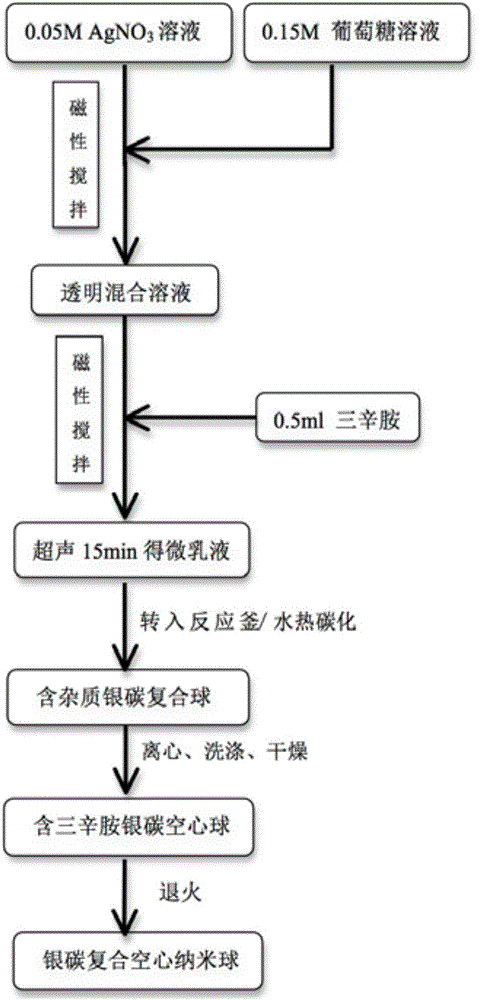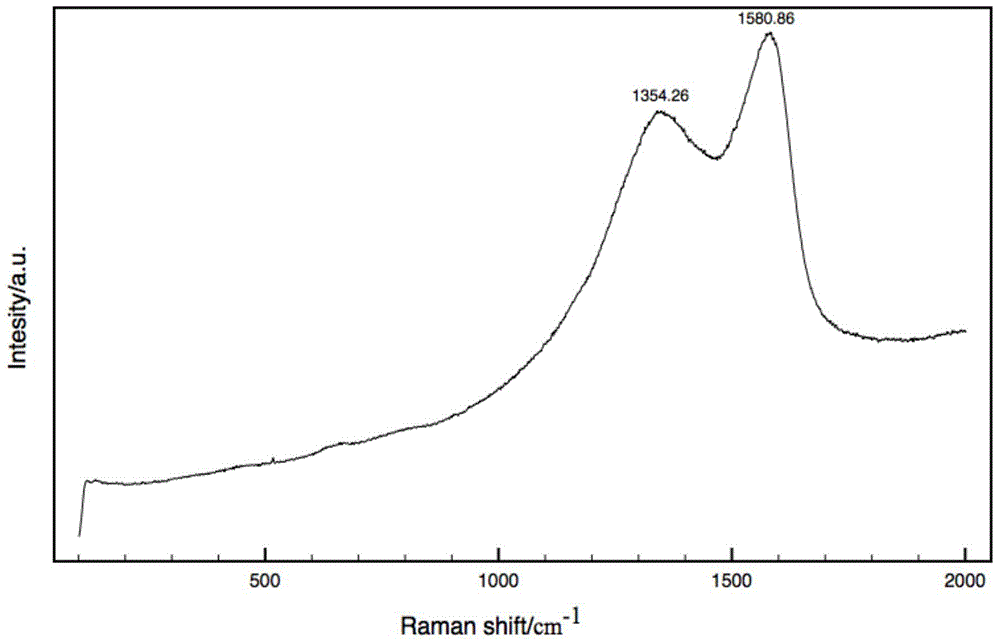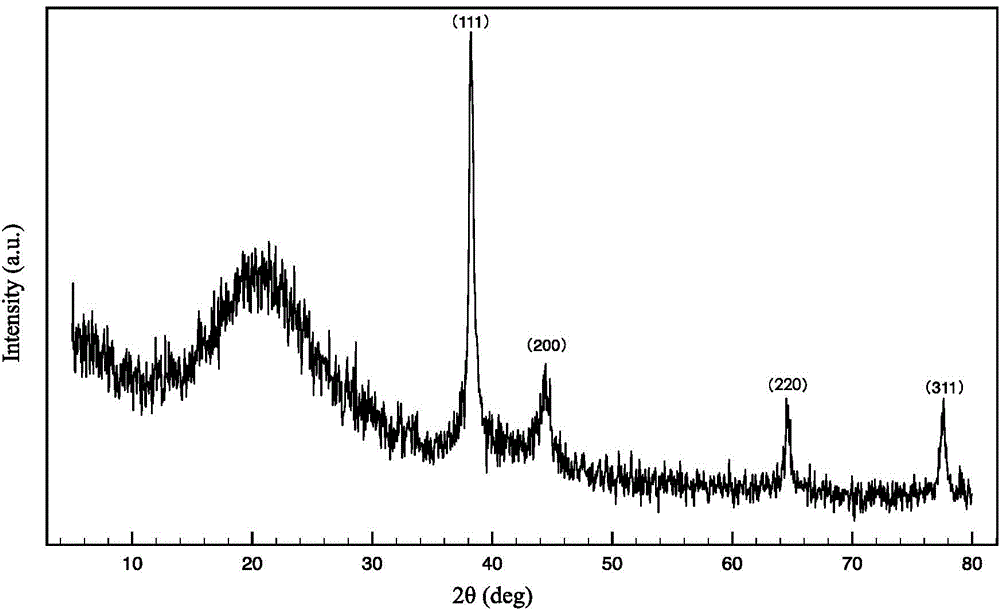Preparation method of silver/carbon composite hollow nanospheres
A hollow nano-carbon composite technology, which is applied in the preparation of microspheres, microcapsule preparations, etc., to achieve the effect of improving utilization efficiency, uniform size distribution, and exquisite design
- Summary
- Abstract
- Description
- Claims
- Application Information
AI Technical Summary
Problems solved by technology
Method used
Image
Examples
Embodiment 1
[0017] The first step: configure 0.025M silver nitrate solution and 0.25M glucose aqueous solution respectively;
[0018] Step 2: Take 30ml of the above solutions and mix them under magnetic stirring;
[0019] Step 3: Slowly add 0.5ml trioctylamine dropwise to the above mixed solution while stirring;
[0020] Step 4: Put the above solution into an ultrasonic cleaner for 15 minutes;
[0021] Step 5: Quickly transfer the above suspension to a 100ml polytetrafluoroethylene-lined stainless steel reaction kettle, and react at 180°C for 12h;
[0022] Step 6: After the reaction kettle is naturally cooled to room temperature, the reaction solution is centrifuged to obtain black solid particles;
[0023] Step 7: Alternately and repeatedly wash the precipitate with water and absolute ethanol 3 times each, and vacuum dry at 60°C for 10 hours to obtain hollow nanospheres; figure 2 In order to characterize the structure of the obtained silver / carbon composite hollow nanospheres, the Ra...
Embodiment 2
[0025] The first step: configure 0.025M silver nitrate solution and 0.25M glucose aqueous solution respectively;
[0026] Step 2: Take 30ml of the above solutions and mix them under magnetic stirring;
[0027] Step 3: Slowly add 0.5ml trioctylamine dropwise to the above mixed solution while stirring;
[0028] Step 4: Put the above solution into an ultrasonic cleaner for 15 minutes;
[0029] Step 5: quickly transfer the above suspension to a polytetrafluoroethylene-lined stainless steel reactor (total volume is 100ml), and react at 180°C for 10h;
[0030] Step 6: After the reaction kettle is naturally cooled to room temperature, the reaction solution is centrifuged to obtain black solid particles;
[0031] Step 7: alternately and repeatedly wash the precipitate with water and absolute ethanol for 3 times, and vacuum-dry at 60°C for 10 hours to obtain hollow nanospheres;
[0032] attached image 3 The XRD spectrum is the structural characterization of the obtained silver / car...
Embodiment 3
[0035] The first step: configure 0.025M silver nitrate solution and 0.50M glucose aqueous solution respectively;
[0036] Step 2: Take 30ml of the above solutions and mix them under magnetic stirring;
[0037] Step 3: Slowly add 0.75ml trioctylamine dropwise while stirring in the above mixed solution;
[0038] Step 4: Put the above solution into an ultrasonic cleaner for 15 minutes;
[0039] Step 5: Quickly transfer the above suspension to a polytetrafluoroethylene-lined stainless steel reactor (total volume is 100ml), and react at 180°C for 20h;
[0040] Step 6: After the reaction kettle is naturally cooled to room temperature, the reaction solution is centrifuged to obtain black solid particles;
[0041] Step 7: Alternately and repeatedly wash the precipitate with water and absolute ethanol for 3 times, and vacuum-dry at 60°C for 10 hours to obtain silver-carbon composite nano hollow spheres;
[0042] Step 8: The product is annealed at 500° C. at a heating rate of 10° C. / ...
PUM
 Login to View More
Login to View More Abstract
Description
Claims
Application Information
 Login to View More
Login to View More - R&D
- Intellectual Property
- Life Sciences
- Materials
- Tech Scout
- Unparalleled Data Quality
- Higher Quality Content
- 60% Fewer Hallucinations
Browse by: Latest US Patents, China's latest patents, Technical Efficacy Thesaurus, Application Domain, Technology Topic, Popular Technical Reports.
© 2025 PatSnap. All rights reserved.Legal|Privacy policy|Modern Slavery Act Transparency Statement|Sitemap|About US| Contact US: help@patsnap.com



